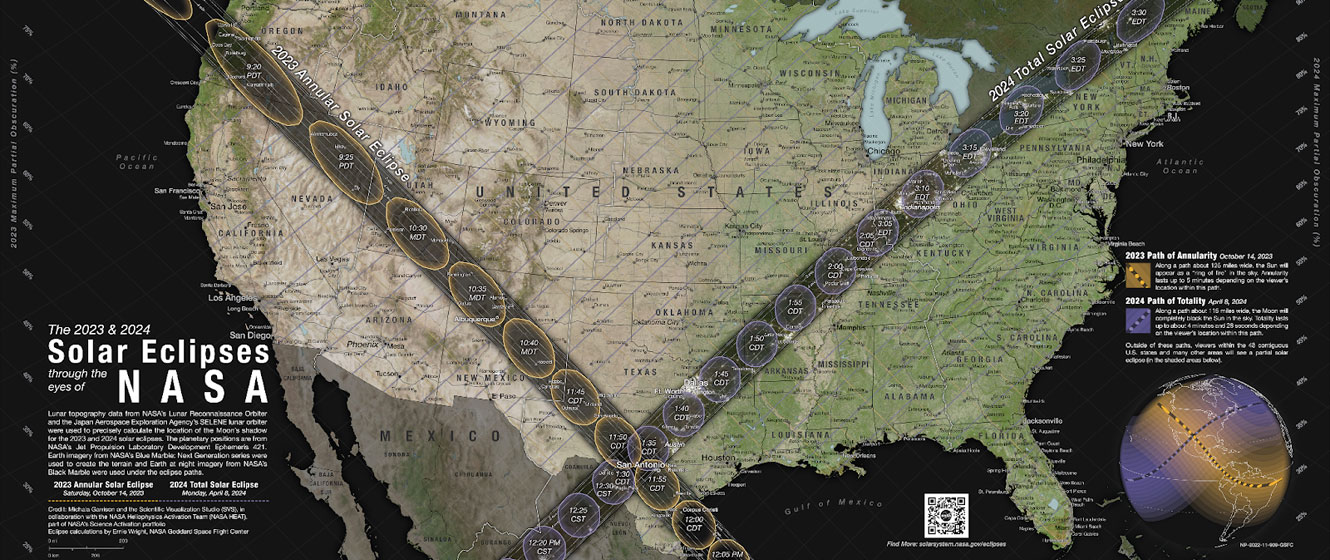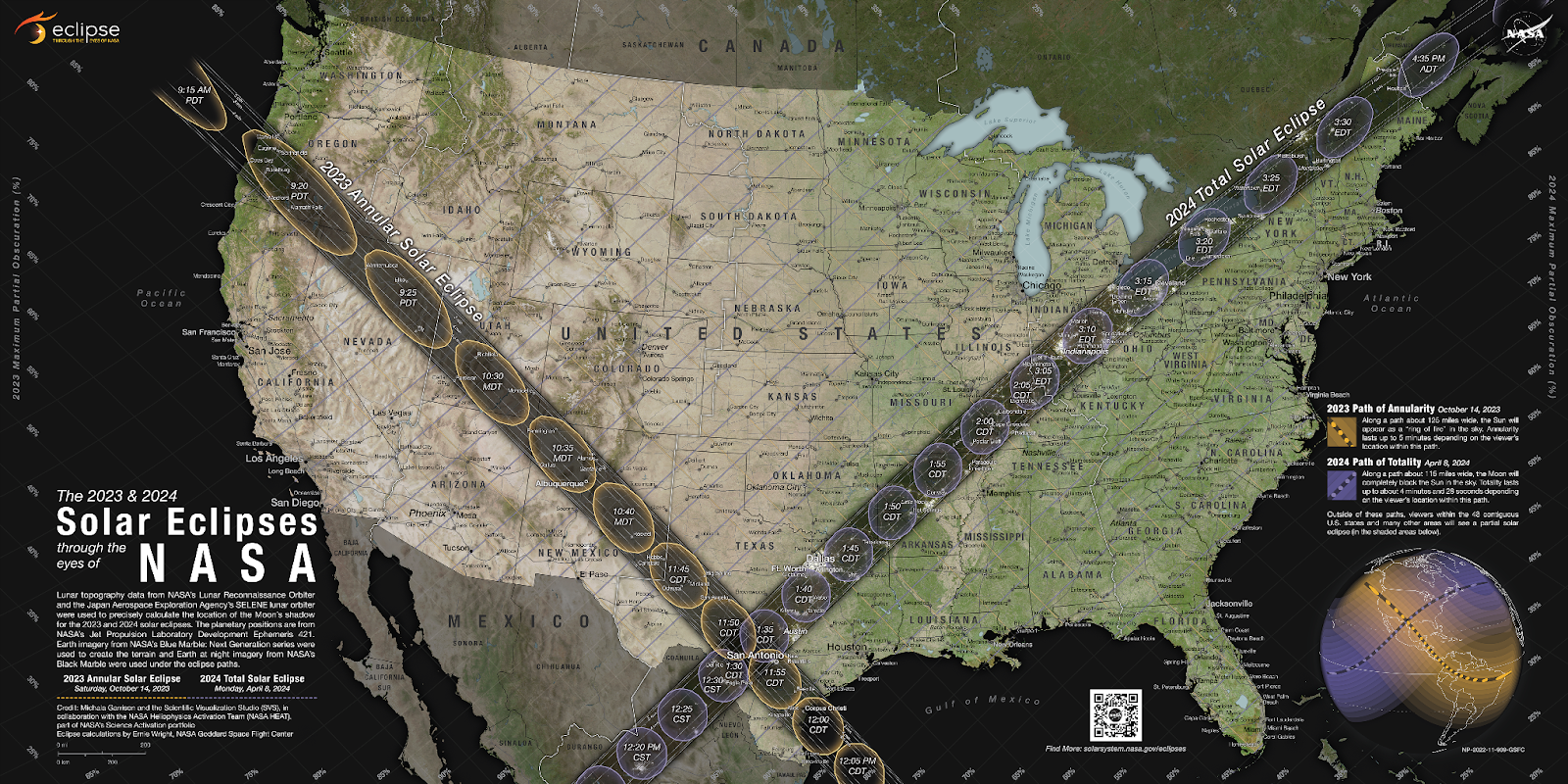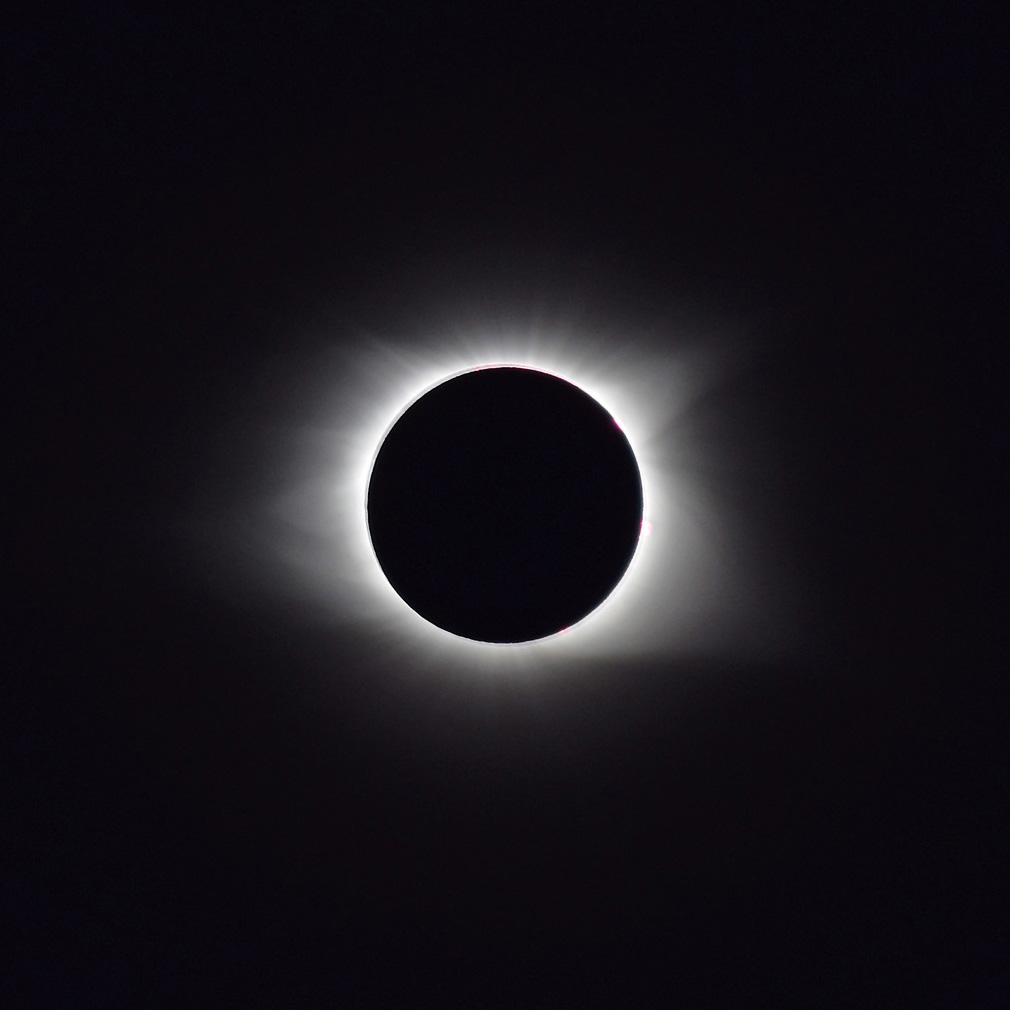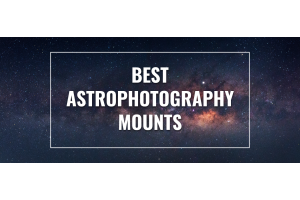
Every few years, the Earth and its inhabitants are treated to a mesmerizing celestial event that captivates the world's attention: a solar eclipse. These awe-inspiring occurrences, where the Moon aligns perfectly between the Sun and our planet, create an extraordinary visual display of cosmic proportions. As we eagerly anticipate the next solar eclipse, let us explore the upcoming celestial spectacle and the wonders it promises to bring.
 Click to Enlarge Image
Image Credit: NASA
Click to Enlarge Image
Image Credit: NASA
The Next Solar Eclipse - Total Solar Eclipse on April 8, 2024
As of this writing, the next total solar eclipse will occur over North America on April 8th, 2024.
The eclipse will begin over the South Pacific Ocean and reach Mexico's Pacific coast at approximately 11:07 am PDT. It will then continue its path through Texas, Oklahoma, Arkansas, Missouri, Illinois, Kentucky, Indiana, Ohio, Pennsylvania, New York, Vermont, New Hampshire, and Maine in the United States before entering Canada in Southern Ontario. The eclipse will exit continental North America on the Atlantic coast of Newfoundland, Canada, at 5:16 pm NDT.
The specific timing of totality varies across different locations in the United States. For instance, in Dallas, Texas, the partial eclipse begins at 12:23 pm CDT, and totality begins at 1:40 pm CDT, lasting until 1:44 pm CDT. In Cleveland, Ohio, the partial eclipse begins at 1:59 pm EDT, and totality begins at 3:13 pm EDT, concluding at 3:17 pm EDT.
During the eclipse, areas within the path of totality will experience a period of complete darkness as the Moon fully blocks the Sun. An important distinction between this eclipse and the one in 2023 is that the 2024 eclipse is a total eclipse. That means the Sun will be 100% blocked out by the Moon, with the Moon’s shadow falling upon the surface of the Earth. This is the ONLY type of eclipse that you can take off your eclipse glasses to enjoy, and it is by far the most stunning.

Precautions and Safety
To safely observe a solar eclipse, it is essential to follow specific precautions. Before using eclipse glasses, carefully inspect them for any scratches or damage. Shine a dim flashlight through the glasses and ensure no light passes through, as this indicates they are not safe for observing the Sun.
It is crucial to use eclipse glasses that are ISO 12312-2 compliant, which ensures their safety and effectiveness. Children should always keep their glasses on and may require assistance in locating the Sun. Never look at the Sun without proper eclipse glasses, as this can permanently damage your eyesight.

It is also vital to avoid looking at the Sun through telescopes or binoculars without appropriate solar filters. Creating your own solar filter is not recommended unless you are an experienced astronomer. During a total solar eclipse, it is safe to remove your eclipse glasses only during the brief period of totality. However, this does not apply to annular or partial eclipses. It is advisable for each individual to have their own pair of eclipse glasses to prevent accidents and ensure proper supervision, especially for children.
The next solar eclipse promises to be a captivating and awe-inspiring event, offering a celestial spectacle that will captivate the world's attention. As we prepare for this remarkable occurrence, let us embrace the opportunity to witness the wonders of the cosmos and deepen our understanding of our place in the universe. Whether you find yourself within the path of totality or witness a partial eclipse, remember to prioritize safety and cherish the profound experience of observing this extraordinary celestial dance.

Learn More
Interested in learning more about observing the upcoming solar eclipse? Not sure where to begin? Check out our Astronomy Hub!
This Article was Last Updated on 10/16/2023











